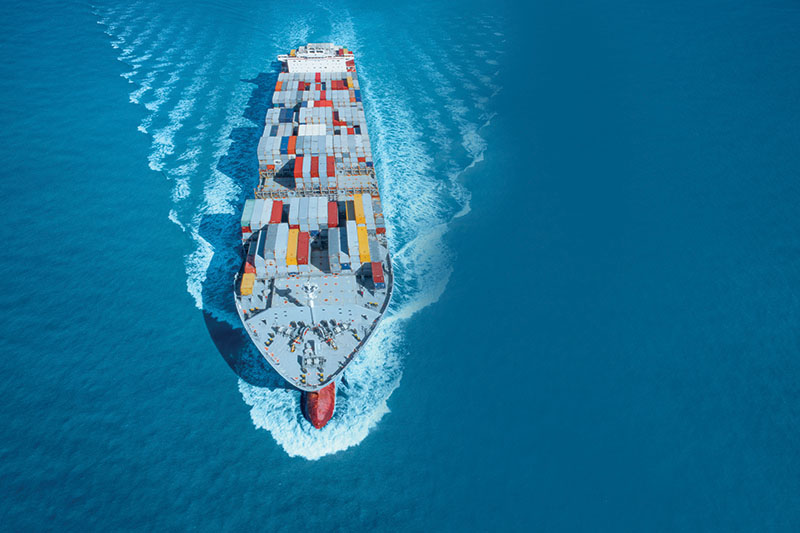Drewry Supply Chain Advisors provides overview of ocean carrier industry: Part I
Analysts don’t think freight rates will come down steeply in 3Q, as carriers will still want to keep rates at a profitable level and will continue to tweak capacity as they see fit.

Editor's Note: Philip Damas, head of Drewry’s Supply Chain Advisors, always provides our readers with remarkable insights on the state of ocean carrier industry. In this two-part interview, he covers a wide range of issues.
Logistics Management (LM): Will carriers be able to sustain their rate structures amid a high level of blank sailings and volume declines?
Philip Damas: The increase in rates, especially in the eastbound Asia-USWC trade, was a result of large scale capacity reductions. Faced with an unprecedented downturn, carriers had little alternative but to remove capacity from the market. In the case of the Transpacific, though, carriers clearly over-estimated how much capacity needed to come out and removed too much capacity, resulting in “roll overs” and in large increases in spot freight rates for many of their customers.
Predicting freight rates is notoriously difficult, particularly in the current volatile context.
LM: What about a capsule forecast?
Damas: In general, we at Drewry don’t think freight rates will come down steeply in 3Q, as carriers will still want to keep rates at a profitable level and will continue to tweak capacity as they see fit. We are now starting to see the “un-blanking” of some TP voyages as carriers correct their previous errors.
LM: How likely will carriers return to “slow steaming” to reduce costs?
Damas: The recent fall in bunker prices makes “slow steaming” a less effective method for carriers to reduce their costs, so we do not see this as a trend for now.
LM: Do you see more construction of “mega-vessels” in the future?
Damas: There are 2 sides to this question. First, Drewry believes that container vessels have reached a maximum size (about 25,000 TEU), which means that the race among carriers to build larger and larger vessels mainly to secure economies of scale has finally stopped. Second, carriers will resume ordering what we call Ultra Large Container Vessels (“ULCVs,” or ships with capacities of more than 18,000 TEU) to support trade growth, but at a lower level than in recent years. Our Drewry Container Forecaster predicts that additional ship capacity per annum in the years 2021-24 will be about 30% lower than in the period 2017-20.
LM: Are there any carriers today that are insolvent or vulnerable to a takeover?
Damas: Some of the carriers have very weak, over-leveraged balance sheets as they enter the current recession and even have “distressed Z scores” (Z scores being statistical indicators of a company’s financial strength). But exposed carriers such as Yangming, CMA CGM and Hyundai have secured or are expected to secure state-backed loans or state funds, while PIL is about to be bought by a Singapore sovereign fund. Unless the Covid 19 crisis results in a second wave or a longer economic downturn, we do not expect a major carrier bankruptcy like Hanjin’s in 2016.
Tomorrow: Part II

Article Topics
Ocean Freight News & Resources
Maryland DOT: $1.9 billion and up to four years to rebuild bridge sunk near Baltimore port 2024 State of Freight Forwarders: What’s next is happening now Baltimore bridge recovery efforts continue with opening of new channel Q1 sees a solid finish with strong U.S.-bound import growth, reports S&P Global Market Intelligence Baltimore suing ship that crashed into bridge, closing port, costing jobs Descartes March Global Shipping Report highlights ongoing steady volume momentum U.S.-bound import growth track remains promising, notes Port Tracker report More Ocean FreightLatest in Logistics
New Descartes’ study examines consumer preferences, changes, and shifts in e-commerce home delivery preferences Potential Canadian rail strike could damage the country’s economy C.H. Robinson highlights progress of its AI-focused offerings with a focus on automating shipping processes UPS announces CFO Newman to leave company, effective June 1 Preliminary April North American Class 8 net orders are mixed Senators take a close look at Amazon with Warehouse Worker Protection Act Despite American political environment, global geopolitical risks could be easing More LogisticsAbout the Author
Subscribe to Logistics Management Magazine

Find out what the world's most innovative companies are doing to improve productivity in their plants and distribution centers.
Start your FREE subscription today.
May 2024 Logistics Management

Latest Resources














